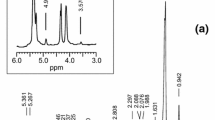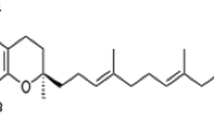Abstract
The oil in Camelina sativa L. Crantz has a combined linolenic and linoleic acid content that is greater than 50% and a relatively low saturated FA content (∼10%). Although the FA composition has been reported, no information is available on the sterol composition of camelina oil. The derivatized plant sterols were separated and quantified with capillary GC and their identity confirmed with GC-MS. The refined camelina oil sample contained approximately 0.54 wt% unsaponifiables, and over 80% of the unsaponifiables were desmethylsterols. Perhaps the most unusual characteristic of camelina oil is its relatively high content of cholesterol, particularly for a vegetable oil, since it contains several times the cholesterol found in other “high-cholesterol” vegetable oils. Camelina oil also contains relatively large amounts of another unusual sterol, brassicasterol. The major sterols identified in the camelina oil included cholesterol (188 ppm), brassicasterol (133 ppm), campesterol (893 ppm), stigmasterol (103 ppm), sitosterol (1,884 ppm), and Δ5-avenasterol (393 ppm).
Similar content being viewed by others
References
Knorzer, K.H., Evolution and Spreading of Gold of Pleasure (Camelina sativa s.l.), Ber. Dtsch. Bot. Gesellschaft. 91: 187–195 (1978).
Putnam, D.H., J.T. Budin, L.A. Field, and W.M. Breene, Camelina: A Promising Low-Input Oilseed, in New Crops, edited by J. Janick and J. Simon, John Wiley & Sons. New York, 1993, pp. 314–322.
Budin, J.T., W.M. Breen, and D.H. Putnam, Some Compositional Properties of Camelina (Camelina sativa L. Crantz) Seeds and Oils, J. Am. Oil Chem. Soc. 72:309–315 (1995).
Plessers, A.G., W.G. McGregor, R.B. Carson, and W. Nakoneshny, Species Trials with Oilseed Plants. II. Camelina, Can. J. Plant Sci. 42:452–459 (1962).
Buchsenschutznothdurft, A., A. Schuster, and W. Friedt, Breeding for Modified Fatty Acid Composition via Experimental Mutagenesis in Camelina sativa (L. Crantz), Ind. Crops Prod. 7:291–295 (1997).
Itoh, T., T. Tamura, and T. Matsumoto, Sterol Composition of 19 Vegetable Oils, J. Am. Oil Chem. Soc. 50:122–125 (1973).
Itoh, T., T. Tamura, and T. Matsumoto, Methylsterol Composition of 19 Vegetable Oils, —Ibid. 50:300–303 (1973).
Toivo, J., V. Piironen, P. Kalo, and P. Varo, Gas Chromatographic Determination of Major Sterols in Edible Oils and Fats Using Solid-Phase Extraction in Sample Preparation, Chromatographia 48:745–750 (1998).
Kochhar, S.P., Influence of Processing on Sterols of Edible Vegetable Oils, Prog. Lipid Res. 22:161–188 (1983).
Gunstone, F.D., J.L. Harwood, and F.B. Padley, Occurrence and Characteristics of Oils and Fats, in The Lipid Handbook, edited by F.D. Gunstone, J.L. Harwood, and F.B. Padley, Chapman & Hall, New York, 1986, pp. 104–105.
IUPAC, Standard Methods for the Analysis of Oils, Fats and Derivatives, Blackwell Scientific Publications, Pergamon Press, Oxford, 1979, IUPAC methods 2.301. and 2.303.
Dutta, P.C., and L. Normén, Capillary Column Gas-Liquid Chromatographic Separation of Δ5-Unsaturated and Saturated Phytosterols, J. Chromatogr. A. 816:177–184 (1998).
Leonard, E.C., Camelina Oil: α-Linolenic Source, inform 9:830–838 (1998).
Gunstone, F.D., Fatty Acid and Lipid Chemistry, Chapman & Hall, New York, 1996, pp. 7, 69.
Kamal-Eldin, A., L.-Å. Appleqvist, G. Yousif, and G.M. Iskander, Seed Lipids of Sesamum indicum and Related Wild Species in the Sudan, J. Sci. Food Agric. 59:327–334 (1992).
Vlahakis, C., and J. Hazebroek, Phytosterol Accumulation in Canola, Sunflower, and Soybean Oils: Effects of Genetics, Planting Location, and Temperature, J. Am. Oil Chem. Soc. 77:49–53 (2000).
Author information
Authors and Affiliations
Corresponding author
About this article
Cite this article
Shukla, V.K.S., Dutta, P.C. & Artz, W.E. Camelina oil and its unusual cholesterol content. J Amer Oil Chem Soc 79, 965–969 (2002). https://doi.org/10.1007/s11746-002-0588-1
Received:
Accepted:
Issue Date:
DOI: https://doi.org/10.1007/s11746-002-0588-1




